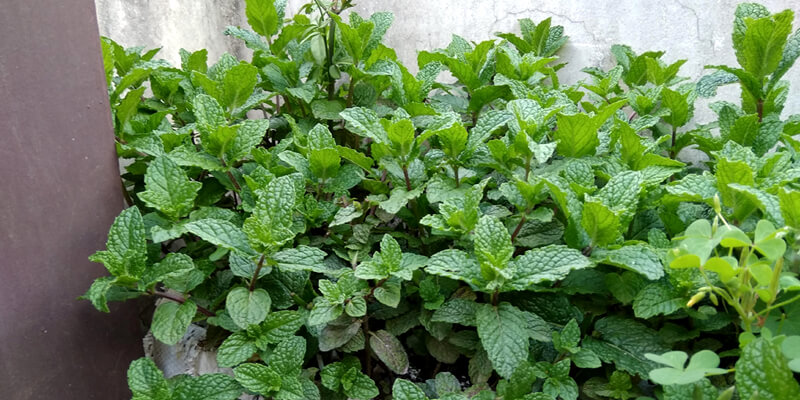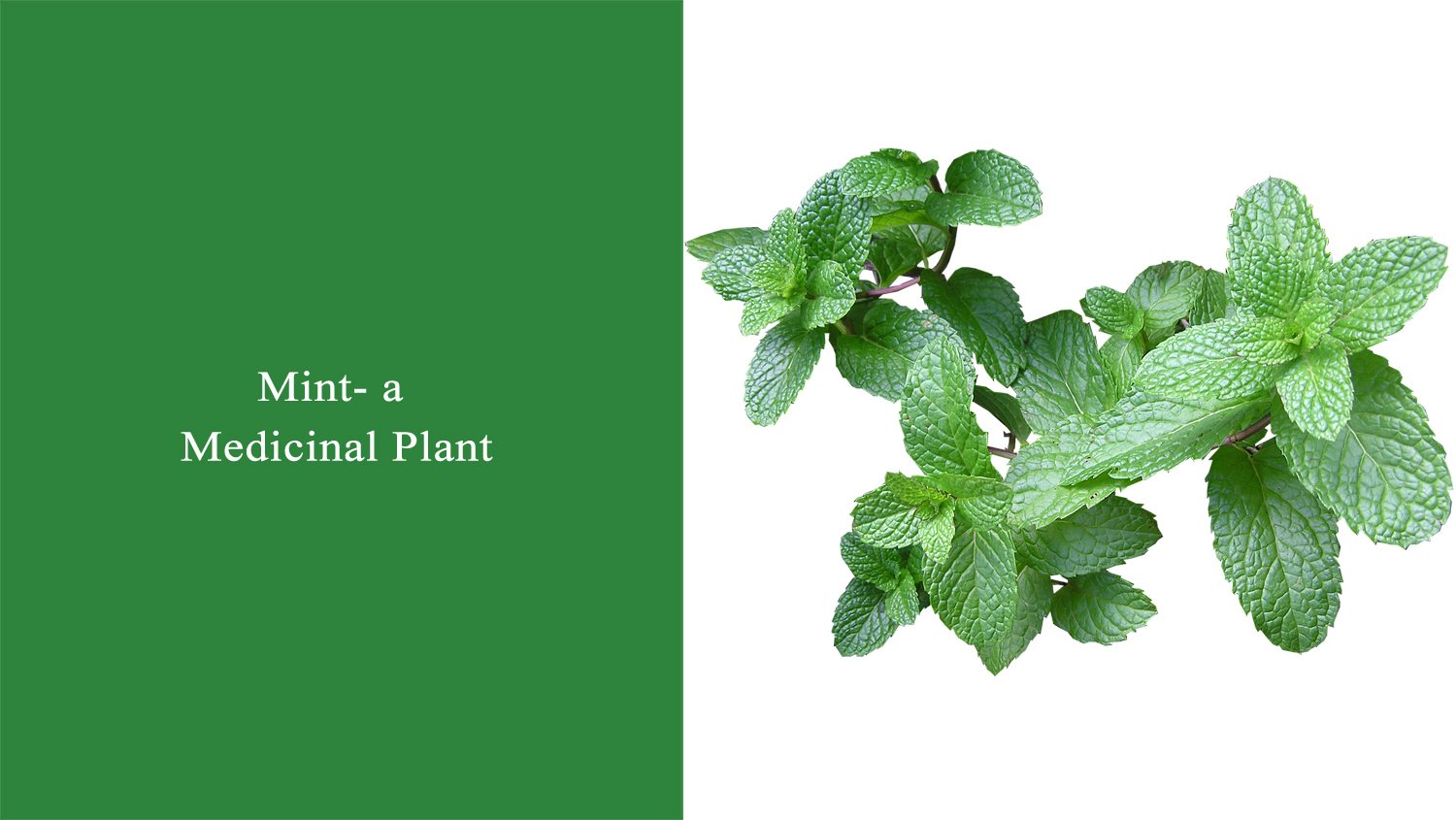Mint- a Medicinal Plant
Family: Lamiaceae
Scientific name: Mentha
Introduction:
Mint is a fast-growing plant and can found in many environments including moist soil. Mints grow better in fertile soil with a pH from 6 to 7. Mint is an aromatic and medicinal herb having ayurvedic value.

It can grow 10-120 cm long. Mint contains a white purple flower and a taproot. It has a high potential to grow and can spread over an intermediate area. Its overgrowth can be minimizing by planting through pots, flower vases, and buckets.
Mint is a perennial plant commonly grows in the temperate area of the world. It prefers a wet environment and moist soil. Mint plant contains antioxidant and anti-inflammatory agents’ i.e rosmarinic acid.
Chemical composition of mint:
Whole parts of the mint plant contain more types of chemical compositions. Among them, some are given below:
7-48% – Menthol
20-46% – Menthone
3-10% – Methyl acetate
1-17% – Methofuran
3-6% – 1,8 cineol
Distribution:
Mint is found in many places in the world including Nepal, India, Brazil, Paraguay, Asia, and Africa.
Types of Mint:
There are various types of mint. Some of them are:
- Peppermint: It grows in a moist and shaded location. In a small amount, it contains limonene, pulegone, caryophyllene & pinene, terpenoids & flavonoids i.e eriocitrin, hesperidin.
2. Spearmint:
It is a perennial plant having a pink or white flower. Fresh or dried leaves are used to flavor many food and beverages. The name ‘spear’ mint derives from the pointed tip of the leaf.
3. Water mint:
Watermint is a perennial herb that grows in shallow water. It is rich in vitamin A. This type of mint also help to relieve nausea and headaches.
4. Banana Mint:
It is a type of mint which has a bright green leaf. Banana Mint contains a banana scent. So, It is good for making tea and tasty ice-cream.
5. Chocolate Mint:
The chocolate mint offers brownish-red stems and attractive serrated leaves. It is used in flavoring dishes and drinks.
6. Egyptian Mint:
It is a herbaceous plant having a flavor similar to Apple Mint. Egyptian Mint gives good flavor to meat.
7. Moroccan Mint:
Moroccan Mint is a compact variety of mint having good flavor. The plant parts help us to refresh breath and relieve a sore throat.
8. Lavender Mint:
It is a very fragrant mint variety. Lavender Mint can easily grow in the pot.
9. Apple Mint:
Apple mint has a sweet and fruity flavor than other mints. It is commonly used to make Mint Jelly.
These different types of mints are medicinally important.
Cultivation:
Mint plants propagates through the creeping stolons. Firstly, stolons should cut into small pieces (7-10cm). These pieces can plant in shallow furrows about 7-10 cm deep with a row to row distance of 45-60 cm.
Irrigation is immediately necessary after planting. Normally, the Mint plant grow on well-drained and fertile sandy, loamy soil. At the same time, It should rich in humus having pH 6.0-7.0.
Soil should have good water holding capacity. Winter season (months) is suitable for planting (December-March). Some species of mint propagates by seed but can be unreliable.
Different species of mint grown in different climate conditions i.e Japanese mint grows in all tropical and sub-tropical areas with a temperature of 20-25 degrees Celsius, Peppermint grown on high summer temperature (41 degree Celsius).
Harvesting:
We can harvest mature leaves from 5-6 months old mint plant when the lower leaves start turning yellow. It is necessary to harvest mature leaves from time to time otherwise it can fall resulting in loss of oil. Fresh leave can contain 0.4% oil.
The leaves can harvest at any time and can use it immediately.
The harvested fresh leaves can store up to a few days in plastic bags in a refrigerator but dried mint leaves should be stored in an airtight container.
Uses:
Mint is one of the most useful and popular herbs that can be used fresh or dried in many dishes and concoctions.
Health Benefits of Mint:
- Fresh or dried leaves of mint are consumed as a herbal tea. It helps to lose weight.
- Mint work as a flavoring agents for ice cream, fruit preserves, alcoholic beverages, toothpaste, shampoos, soaps, chewing gum, and other skincare products.
- Mint plants contain an antioxidant and anti-inflammatory agent (rosmarinic acid) which helps in relieving seasonal allergy symptoms.
- It contains menthol which has a cooling effect and can help relieve a sore throat, prevent gastric ulcers.
- Mint is a natural antimicrobial agent and breath freshener (treat bad breath).
- Mint is effective at relieving digestive problems.
- It reduces nipple pain from breastfeeding.
- It helps to cure nausea, depression, fatigue, and headache.
- Its anti-pruritic properties can help- for treating insects (mosquitoes, honeybees, wasps, etc) bites.
- The use of mint a prevent memory loss.
- It is used in flavoring, perfumes, and cosmetics.
- People use mint (especially peppermint) as flavoring agent of the pickles.
- Some people plant the mint for insect control (repelling pesky insects and attracting beneficial ones).
Side Effects of Mint:
Same as other many herbs, mint can harm some users. Menthol oil can cause breathing problems for children if it is applied to their faces.
The use of mint tea during pregnancy can cause health problems. Pure menthol is poisonous.
I hope this article helped you to know about a medicinal plant-Mint.






